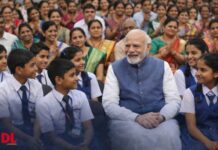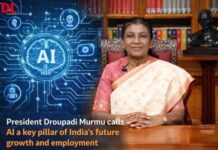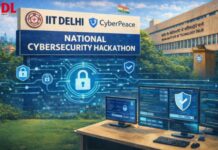
In an attempt to bring in a fresh new perspective to class room learning, Intel research team in India carried out an exercise to capture what parents and teachers had to say about their lives in alignment with that of the children. The needs, dreams and aspirations of children were looked into, with an indepth exploration into their daily lives, surrounding home, school and spaces in between. Parents had a lot more to say in terms of dreams and aspirations and what they thought would be the ideal solution to the drawbacks in the present day education system. Teachers also contributed in coming out with the shortcomings, ailing classroom teaching, which helped ultimately the Intel team in finding out the present day paradigms and the trend settings for a technology-empowered generation for the future. The research provided with myriad insights can be the eye openers for developing a need-based solution for school education, particularly for an emerging market like India
Because of the deep-rooted inclination towards education, any attempt to bring about changes, however big or small, would necessarily have to be explicit in
terms of the benefits and value propositions. With this understanding, the research team at Intel in India has found it quite challenging to develop a solution, for the teachers to teach well and the students to learn better. The Intel team study captures student insights through in-depth personal interviews, expert observations and cultural probes. A number of artifacts used by them were also studied and documented in order to bring out the subtleties of personalisation and individual usage models. The study also unraveled the daily routine of a typical student and observations were mapped out within the context and the ecosystem captured as a whole. The research was not just limited to the end users or “consumers” of technology in education, but also to
the important drivers, chief stakeholders and also the players in the ecosystem. User research was done to understand the needs and attitudes of primary users,
secondary users and drivers. Secondary research was done to understand opportunities in education for middle tier India.
Secondary research
Areas covered in the research are-
• Market segmentation
• The Ecosystem- Users and Drivers
• Government initiatives and vision for ICT in Education
• Current education system
• In depth need analysis
Market segmentation
The target Segment for this study is the middle tier India, and in the education domain. The urban India segmentation is classified as the rich, the consuming class, the climbers, the aspirers, and the destitute. Indian middle tier comprises of the consuming class, the climbers and the aspirers. The rich class and the destitute are not included for this study. The other segment is the education
domain or schools, which was considered basing on the statistics on ICT
penetration in Indian schools, which is again less than one educational PC per 1000 students in schools. The focus was on the urban schools, and certain government sponsored schools, which will help to provide reach and network. Municipal and Government schools were not considered owing to low infrastructure.
Ecosystem – Users and Drivers
The user study was based on a classification of primary and secondary users. The primary users of any solution in the target segment would be the students.
Teachers and parents are the secondary users Schools and the Government (state nd centre) who have extended policy level support and funds for deployment of ICT for education in the schools are considered as the primary drivers. Parents and teachers are the secondary drivers.
Government initiatives
There are several policies and initiatives proposed by the government both at a central as well as state level, to promote the use of ICT in India education. The current policies by the central government include part of the tenth five-year plan, the CLASS project, Sarva Siksha Abhiyan, among others. Among state governments, Kerala, Delhi and Orissa have introduced policies for ICT implementation in education. Among visionaries, President Abdul Kalam and the Minister for Communication and Information Technology have proposed several initiatives regarding the use of technology in education. NCERT, a government agency, has helped ICT penetration by introducing programmes for the use of technology in education.
User research
The study was done in Mumbai and surrounding semi urban regions .The user research was complimented by ethnographic studies in Bangalore and Hyderabad schools in southern India. The goal of the user research was to understand the needs and the attitudes of middle tier India, in the domain of education. The user segmentation was done based on the socio-economic classifications, the samples being: students (30 numbers from 5th to 9th standards), schools (20 school representatives like Principal, Head mistress/Master, etc) and parents (15 families).
Key insights
The insights summarising analysis of user research, contain • Understanding of the needs and the motivations of the users • Relationship between the users and their environment • Understanding of current technology usage scenarios and extrapolation to future usages • Choke points and pressure points
Insights from the students
The need to carry all textbooks and notebooks everyday to the school irrespective of the timetable weighs down the child. At school, the large size of the class leads to lack of personal attention from the teachers and the unappealing text books coupled with traditional methods of teaching de-motivates the child. An integral part of the Indian child’s life is the tuitions, which along with the schools follow a complete exam focused process. Peer pressure and parental pressure drive the child towards result-oriented education
Insights from the parents
Even an illiterate parent realises the potential of computer education (though in many cases they cannot make out a difference between computer education and knowledge) and aspires to give his child computer education. Constant complaints about inaccessible learning and inconsistent curriculum are common notes in the research. Lack of innovative teaching and lackluster learning mechanism is what concerns the parents most.
Insights from the teachers
The education content contains novalue-based teaching and the curriculum is unappealing. The rush to meet curriculum deadlines also plays havoc in their approach to teaching. Lack of parental involvement leaves the moral onus
entirely on the teachers to bring out better results. The teachers seek technology as a solution for most of their problems. To them technology has a major share in markedly changing their lives for the better and opine that technology has made it easier for all and sundry except the teaching sector hence it is high time for technology to give them better honor.

Identified key challenges
• Traditional, non technology based teaching techniques
• Stressful life, over crowded classes, long study hours, need to carry heavy school bags, etc.
• Deficiencies in current education and examination system promoting scoring over learning, theoretical rather than practical, less attention to vocational or
technical education, etc. Towards a solution space Gathered from different perspectives, some solution points are
• Innovative content to make learning an exciting experience • Complete the learning experience by bringing together students, parents and teachers
• Role of technology enablers (like service providers, content providers) are critical
• Need to focus on developing the ecosystem to make the solution fruitful and effective
• Initiatives from the government side and policy implementations which help the education
segment develop
Some attempts for change The CBSE, Central Board of Secondary Education, has
introduced several initiatives to improve the education in India. It has made attempts to reduce the size of school bags and relieve burden on children, including locker provision and worksheets for homework. The board has also provides students with tips on relieving examination anxiety. A section of schools have introduced creative teaching techniques that include the use of computers and electronic media to impart educational material. Innovative electronic concepts for education are also brought about with private sector
participation. Previous studies have pointed out that there have been innovations like distance learning and e-learning, which have made learning a more enjoyable and fruitful experiences. Such endeavors address problems
faced by a particular section of users and cannot be a generalised solution. Hence it is necessary to envision and empower a design, which addresses the above-identified challenges that are universal to students, parents and teachers across India. The current research has led us to
realise the need for urgent intervention of technology in the Indian educational system to influence and revolutionise the learning techniques. Education is one
of the key areas constantly seeking attention from the policy makers and it is high time that technology is integrated by them not only into curriculum but also support for a
























